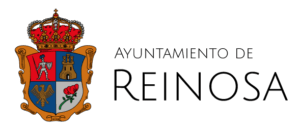
The traditional popular festivals are a sample of the culture and identity
They are part of the most important cultural heritage to express the identity of citizens, their geography, their history and their sociocultural heartbeat.
DÍA DE CAMPOO
The complete history
Article by Ramón Rodríguez-Cantón published in the magazine Cuadernos de Campoo nº 1, 1995, edited by the City Council of Reinosa
Some curiosities
“A toda la Presidencia
le voy a pedir, prudente,
si cometemos errores
no se rían de inocentes”.
In the San Mateo Celebration program of 1946, José Luis Bustamante, who had the initiative to baptize the “celebration” and who belonged to the commission, makes a history of DÍA DE CAMPOO, which was premiered with the new nomenclature on Sunday, September, 27th 1942. The contest had a double character: provincial and regional with the following details: dance couples; singer couples, pairs of tambourine singers and players; soloists… The total amount of the prizes amounted to 1,970 “pesetas”.
The nomination of DÍA DE CAMPOO favored the integration of various acts of the program that had a certain folkloric character, included bowling contests (the most notorious exhibition was reserved for this day), rope shooting contest, regional costumes and those that had been traditionally celebrated, although they had nothing folkloric, such as pigeon or shot with a carbine and short weapon, archery and simulated wild boar hunting, as well as other less frequent festivals such as the «suelta de palomas», «peleas de gallos» or «encierro de vaquillas».
Contests
Learn about the events that compose Día de Campoo festivity and the dates of the contests
The essence
“Rescue and defend the cultural legacy of a community, preserve it and transmit it.”.
The traditional popular festivals are a valuable testimony of our identity as social beings. They build an event that made us see back through time and they give an integral vision of our expression of collective identity within a community. The traditional popular festivals abridge the sociocultural elements reflecting an era of their daily life and their socioeconomic condition; resulting an ideal scene to understand our past, our present and our future construction as a community group.
Our folklore leads us to a way out of routine. Popular festivals express the social trace and that constitute one of the most valid interpretations for understanding past processes as local uses of organization and functioning of a human group. Historical memory has a lot to thank for this type of demonstration. Rescue and defend the cultural legacy of a community, preserve it and transmit it.
